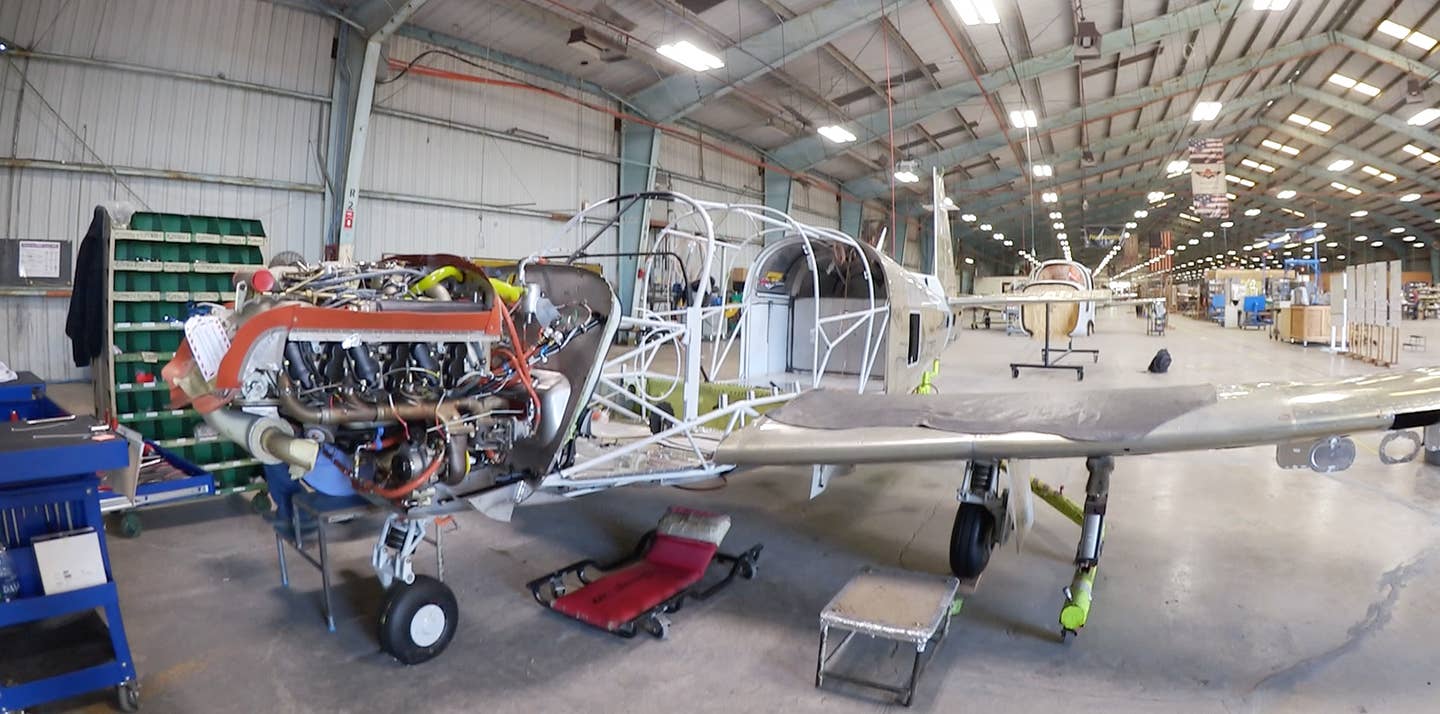Mooney’s Last Act?
Mooney shutters for the umpteenth time. Now what? No one knows, but one thing’s for sure, the Chinese rose is wilting.

If Mooney was struggling to sell airplanes before its abrupt shutdown last week, it may need more luck and faith than exists in the known universe to find any buyers going forward. It baffles me why companies that get into money trouble decide the smartest thing to do is turn out the lights and stop answering the phone. Ya think next time they try to sell a $750,000 airplane that a potential buyer won’t remember? I’ll mark it on my calendar to offer a reminder.
I’m told by a source familiar with the company that Mooney is looking for U.S. investors to funnel more capital into the business, but it’s difficult to imagine what the sales pitch would be. Mooney’s output has been dismal against its competitors—just 14 airplanes last year and seven in 2017. Four so far this year. Market leader Cirrus sold 380 piston aircraft in 2018.
Calls to Mooney have been unanswered and emails were referred to the factory manager, Albert Li. These were also unanswered, on the advice of counsel, I was told. I think the smart thing to do, and at the very least, would be a webpage explaining the difficulties with a promise of details soon. And answer the damn phone to reassure the last stalwart buyer who gave you most of a million dollars for a new airplane.
How did we get here? They don’t favor us with the P&L, but for Mooney, past has always been prologue. Over a 90-year history of frequently interrupted but always financially colorful ups and downs, Mooney has been variously owned by an electronics company, an FBO chain, a steel company, two financial holding groups, two aircraft companies, a private investor and, currently the China-based Meijing Group. The structural details of that deal are unknown.
Given its string of shutdowns, bankruptcies, fire sales and stutter starts, saying that Mooney defines hope springs eternal is to do unspeakable violence to the concept. Every new suitor seems to have approached the company thinking it could be sustainably righted and every one has failed. By sheer determination and occasional luck, the company has managed to design and produce some terrific airplanes in those fitful years and months when it was viable. The J and K models, for example, and the more recent Ovation are rightfully prized. The older C and E models are affordable on the used market.
But now, we’re in a whole new universe. New airplanes have vastly outstripped inflation and the people who can afford to buy them—they usually write checks—didn’t accumulate that wealth because they’re dumb. Before sinking a megabuck into an airplane, they’ll want to consider the company’s financial stability. And Mooney has never and still doesn’t compare favorably with a Cessna or a Cirrus. Mooney is patently asking buyers to take a chance and not enough appear willing to do that.
Unfortunately, despite a relatively strong economy, the demand never came. The last serious volume Mooney enjoyed was between 2005 and 2007, when it delivered 239 airplanes. If it got there again—a big if—I suspect the company could be profitable. I was told during one factory visit that 30-plus airplanes a year would be break even.
We don’t know the terms of the Meijing deal, but the company has admitted to at least a $150 million capital infusion. That’s not trivial. Some of it went into recertifying the M20 series with a second door and upgrading the factory to tease some build hours out of the complex metal airframe. (See the details in this AVweb video.) Those investments appeared appropriate to the volume Mooney could reasonably expect.
Like everyone else in the airplane biz, Mooney has had its dead ends, most recently the clean-sheet M10T composite training aircraft proposed in 2015. The design was appealing and innovative, but two years later, it was canceled, evidently because Mooney realized the sales volume juice couldn’t justify the developmental squeeze.
And that gets us to China which, increasingly, we’re hearing is just not happening. For both the legacy metal airplanes and the new age M10, China was seen as a bottomless pit of demand, fueled by rich Chinese in whose hearts there burned an unquenchable desire to fly. The reality has proven more sobering, with regulation still stifling GA growth and recently imposed counter tariffs denting even modest sales. When I was at Kerrville last year, two M20s shipped to China had been returned because of type certificate hang-ups. It’s awfully late to still be fooling with that. Chinese-owned Progressive Aerodyne had hoped for strong demand from China for its SeaRey, but it hasn’t materialized. It might eventually, but I think it will be years.
The CEO of another Chinese-owned company told me the flow of Chinese investment into the U.S. has been significantly slowed by anti-corruption efforts and a slowing industrial economy caused in part by U.S. tariffs. We’ve already reported that Icon had to retrench partially because of this. Evidently, the Chinese are no smarter about aviation investment than those folks Vern Raburn lined up to fund the Eclipse.
But if there’s a silver lining here, it’s that there’s an installed base of more than 10,000 Mooneys out there. Supporting those airframes represents a viable business and some of Meijing’s investment went into online inventory control and parts manufacturing. I wouldn’t expect a fleet that large to be orphaned because fleets smaller than that still soldier on. The factory still has the capacity for outside aerospace work, which it has done a lot of over the years.
And here, Mooney’s checkered history might provide comfort. For nearly a century, this company gives cats a bad name. It has simply refused to stay dead. As for new airplanes, well, knowing what you know, would you buy one? That’s the question people selling them will have to answer convincingly. Not a job I’d want, thanks very much.






